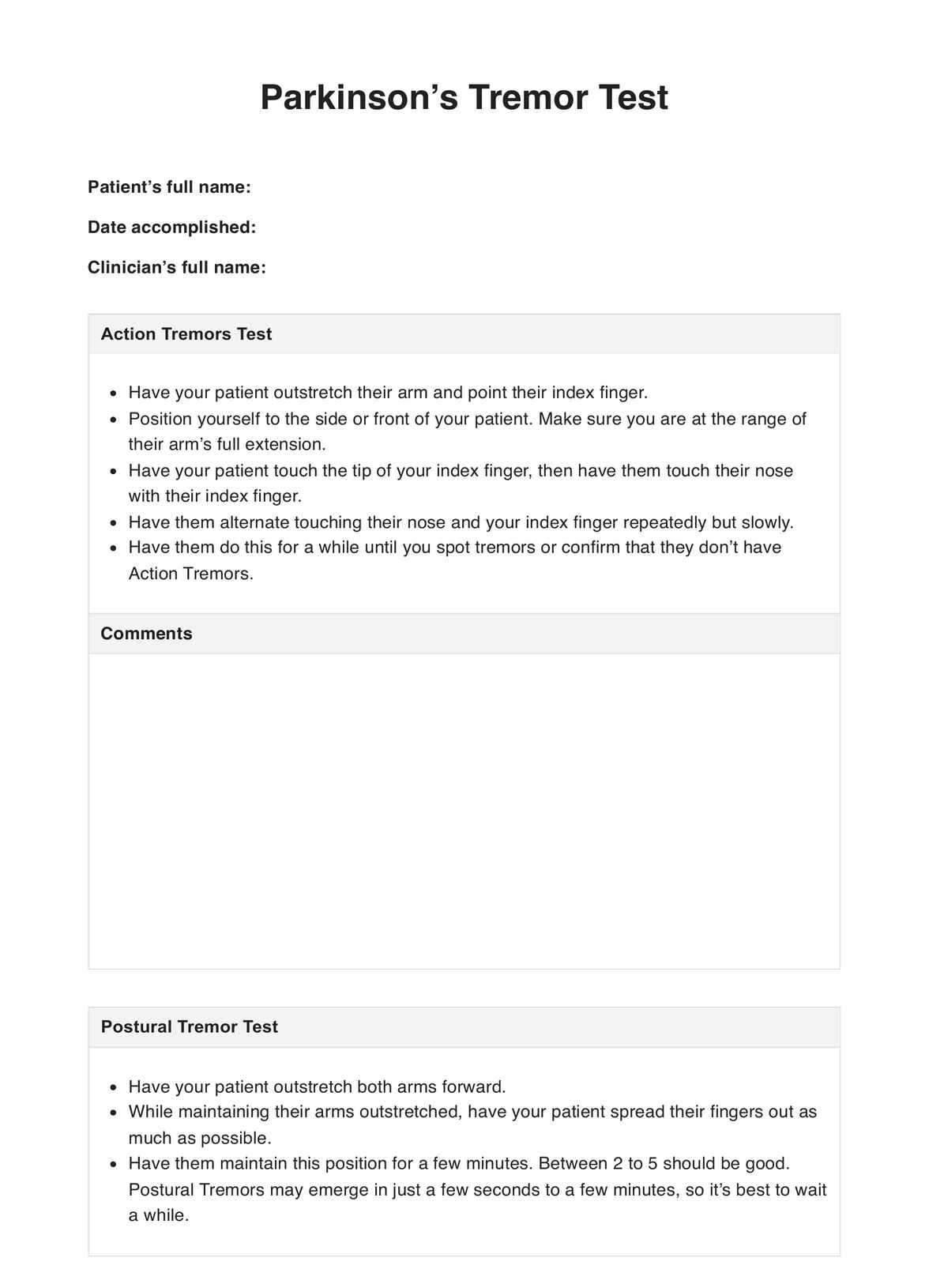No. The Parkinson’s Tremor Test only checks if the patient has tremors in their body. It doesn’t assess other symptoms, so it won’t give you the full picture of the patient.

Parkinson’s Tremor Test
One of the symptoms of patients who might have Parkinson’s Disease is tremors, especially while at rest. Conduct the Parkinson’s Tremor Test to screen patients for tremors.
Use Template
Parkinson’s Tremor Test Template
Commonly asked questions
You should conduct tests that check for rigidity, gait, balance, and Bradykinesia. It’s best to do these before conducting scans and neurological tests.
It depends on the patient. Some patients will have tremors that will show up in seconds when you conduct the tests. Some will take minutes. It’s best to allot enough waiting time before concluding if they don’t have tremors.
EHR and practice management software
Get started for free
*No credit card required
Free
$0/usd
Unlimited clients
Telehealth
1GB of storage
Client portal text
Automated billing and online payments











